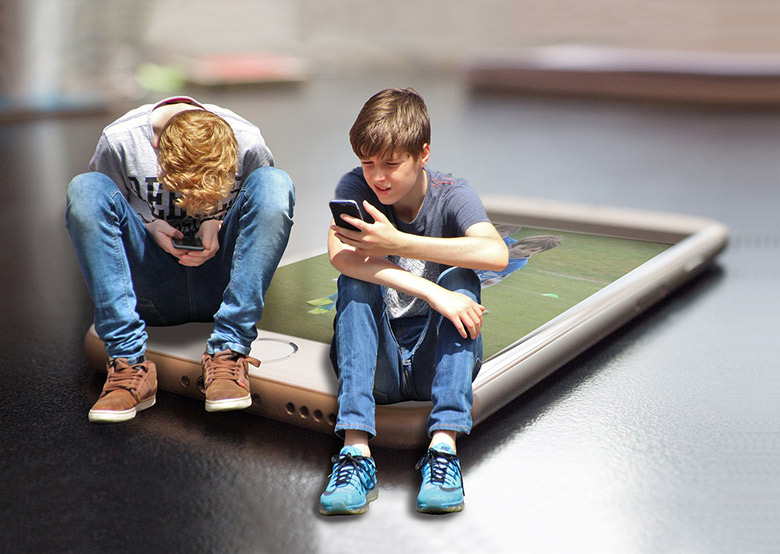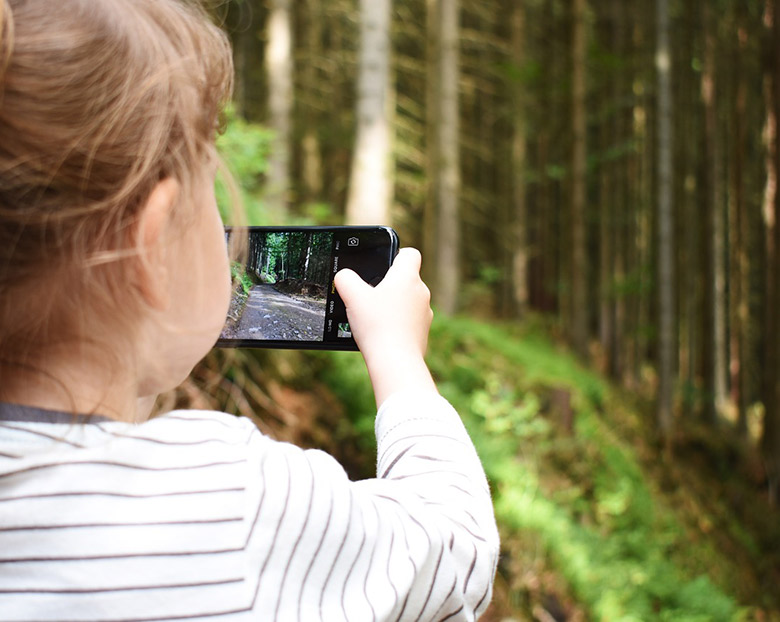
Tone Delin Indrelid discovers that it’s time to examine her stubborn unwillingness to embrace technology as a tool in raising independent Vikings.
At the start of the year, my family and I left a high mobility expat life behind and returned to our native Norway.
Almost overnight, our three children experienced major changes. They were used to a parent driving them everywhere – now, they could simply hop on a bike and go.
They were used to non-existent freedom of movement and limited level of responsibility – suddenly, they saw that kids everywhere were home alone as well as out and about, unsupervised; responsible for their own space, time and safety.
I was delighted for them. Finally, the freedom and responsibility I remembered from my own childhood!
Read more: Parenting Tips as a Foreigner in Norway
‘Ah,’ I recalled, ‘the ability to be home alone! Or to roam our neighborhood, the only expectation being that I’d abide by my parents’ safety rules, not talk to strangers (an unlikely prospect in our middleclass suburb), try not to ruin my new shoes, and come home for dinner.’

I’ve been met with amusement and agreement, disbelief and disdain sharing childhood memories like these with people around the world, but this is the childhood I’d love for my own kids to have.
I’m sure you can imagine my dismay when I, on a particularly cold and harsh day in January, realized that my parenting norms were perhaps a little less laidback than I’d given myself credit for.
‘Hi! Our daughter would like to invite yours to join her at our house after school tomorrow,’ read the perfectly innocent, welcoming text message. ‘They’ll just use their kick-bikes there. I am at work but will be home after an hour or two.’
I’m not ready for this!
I knocked my head on a brick wall that day. Suddenly, I wasn’t the adult recalling a childhood filled with freedom or the stand-alone Scandinavian free-range parent in an international helicopter parent community.
I couldn’t bring my head around my baby, my innocent and perhaps slightly overprotected 8-year-old third child, spending hours home alone in her own house, never mind in someone else’s. What if something happened? What if there was a fire in the toaster? What if someone got locked in the bathroom? What if she needed help?
There was nothing for it. I had to explain my reservations to a baffled and surprised fellow parent and her admirably independent 8-year-old daughter. Perhaps not surprisingly, my own, considerably less independent, 8-year-old daughter burst into a fit of rage I hope I won’t see again any time soon. Embarrassing? For her, absolutely. For me, yeah, a little, but more awkward.
Most of my Norwegian friends’ kids were home alone by the time they were 8. They learned how to from an early age. They’re used to it. Indeed, although children are different and cope differently with responsibility, around 6 is generally a good age to start practicing home alone time, says Norwegian psychologist Belinda Ekornås.
It is, however, important to start with short periods of time, make sure your child knows when to expect you back and ensure your child knows how to be safe, elaborates Professor of psychology Willy-Tore Mørch. He stresses that a child who is left home alone should be able to recognize potential danger (‘such as a fire in the toaster?’ I mutter to no one in particular) and know how to reach a responsible adult if needed.
The littlest one may be old enough to accept responsibility for herself, but she didn’t grow up in Norway and she hasn’t learned how to. Clearly this was something we had to work on at home first.
She joined her friend as soon as there was an adult present that day, and my husband and I sat down to discuss this brave new Norwegian world and how to raise our kids to become independent and responsible out-and-abouters and home-aloners.
From key chains to smart phones
Kids being responsible for themselves and going home to an empty house after school in Norway is certainly nothing new. In ‘the olden days,’ as the middle one tends to call the 1980s when I went to school, children whose parents both worked outside of the home often wore a key in a string around their neck and were referred to as ‘key chain kids.’

Today, many parents make use of the after-school clubs available for children in grades 1 through 4, but by grade four, many prefer to simply go home. Children, according to research by sociologist Brita Bungum, experience being home alone after school before parents return from work as their ‘free time’ in a busy week, an opportunity to relax without adult supervision or a schedule to adhere to.
One thing that differentiates the ‘key chain kids’ from my own childhood and todays young independents, is the use of mobile phones.
‘Sure, all my three kids are home alone just as we were,’ shared one childhood friend, ‘but they have access to phones. If something happens, they can call us. If we want to check in on them, we can call them. If I need to, I can track their movements with an app, and I can control their Wi-Fi access from my own phone.’
‘But mama, everyone else has one!’
At my children’s school, most kids have a phone by the time they reach grade 5, some considerably sooner. Indeed, recent research from Norway’s Medietilsynet indicates that most Norwegian children between the ages of 9 and 18 now have their own mobile phone:
- By the time they’re 16, 99% have their own smart phone.
- Phone owner are getting younger; while ‘only’ 67 % of those aged between 9 and 11 had their own smart phone in 2014, this was up to 81 % by 2018.
- In 2014, 18 % of the 9-11’s had a mobile phone but not a smart phone.
- By 2018, that number had dropped to 9%
Do they really need one?
I resisted at first. I spent years restricting my children’s online presence, teaching them online etiquette, championing the virtues of ‘real’ social interaction, free play and fresh air. If one of their parents were home, I really didn’t see why my 8-11 age bracket kids needed a phone.
For a while, that worked. They went to school, came home, and went out again, having made solid agreements of where, when and with whom. But as their social lives widened, so did their comfort zone, their circle of movement and their level of independence. The middle one started calling from various friends’ phones to let me know where he was.
Some days, he remembered to call me promptly. Other days, he forgot, causing waves of caffeine induced nausea and nervous nail biting on my part. There was a string of phone calls to various parents I didn’t know trying to track him down, and some concern over said parents having to pick up the bill for our son’s constant use of their children’s phones.
One dark and drizzly March evening, we met our turning point. It was 8.45 pm, football practice had ended ages ago and our son should have been home and on his way to bed. The girls were in their PJs and I was pacing the floors. My husband was out, trudging through the wet forest calling our son’s name – no doubt feeling every bit like the guy whose stubborn wife refuses to embrace modern technology.
Of course, our child was found, unharmed and deliriously happy, at a local football match with his little buddies (whose parents had all been notified of their whereabouts by phone).
A work in progress
And here we are. A couple of months into our life in Norway, we (ok, I…) have embraced the phone as a useful technological tool in our family, providing kids and adults alike with some form of safety net as well as an opportunity to be more flexible while learning skills of independence and responsibility.
The middle one is breaking ranks with an old school Nokia. I can reach him, and he can reach me, as well as his friends. The oldest one has my old iPhone 5 – also known as ‘the brick’ – which serves its purpose for now and will hopefully keep her off the teen uncool list for the remainder of the school year.
They both enjoy more freedom and home alone time than they ever have before. They both also accept that they are responsible for their own safety and for letting us know where they are, with whom, and at what time they expect to come home.
They are thriving, and I couldn’t be more pleased for them.
As for the littlest one, my baby, she doesn’t have a phone. She doesn’t roam the forest or spend long periods of time home alone either; but it’s a work in progress. We’re moving towards increased independence daily but for now, she is not ready. And neither am I.

